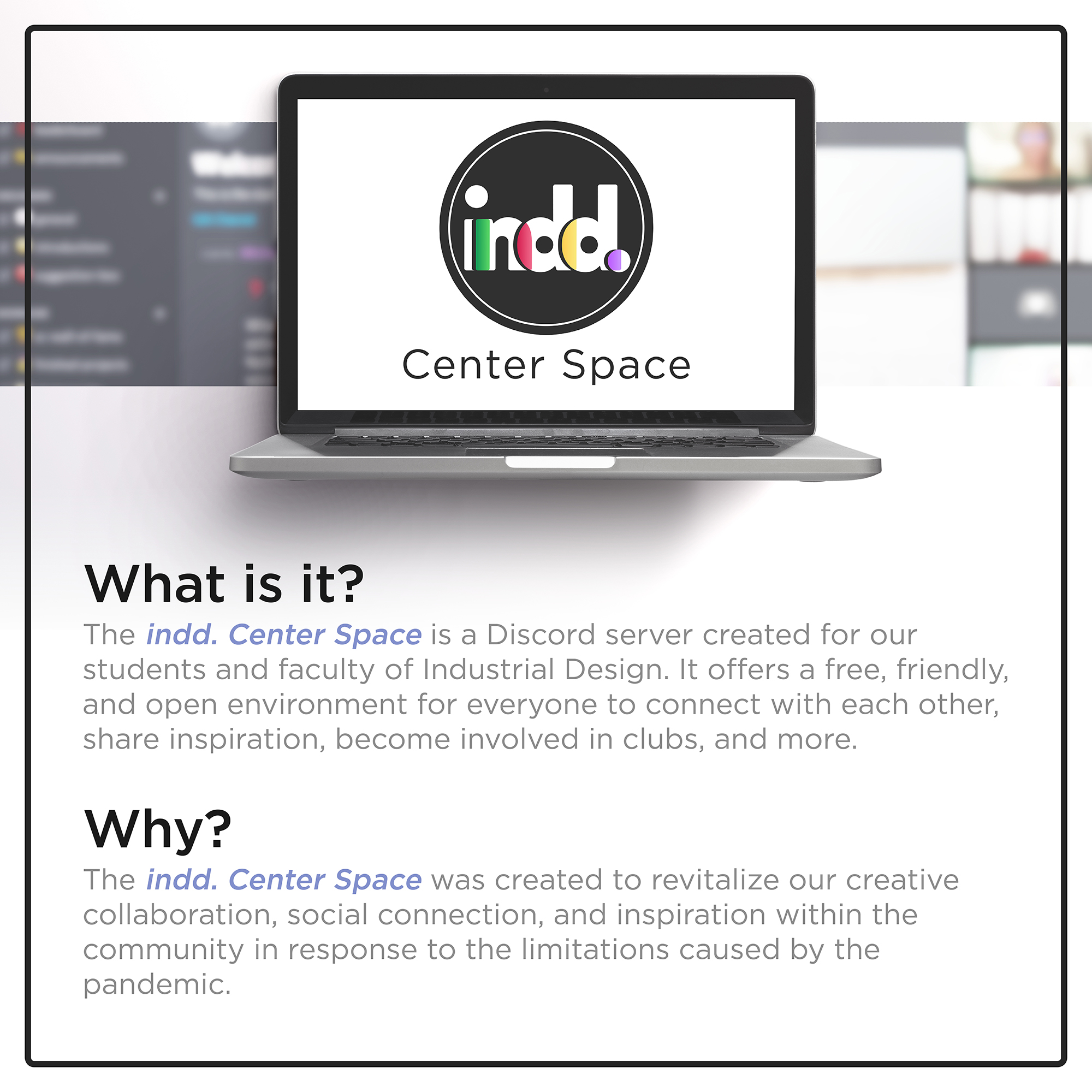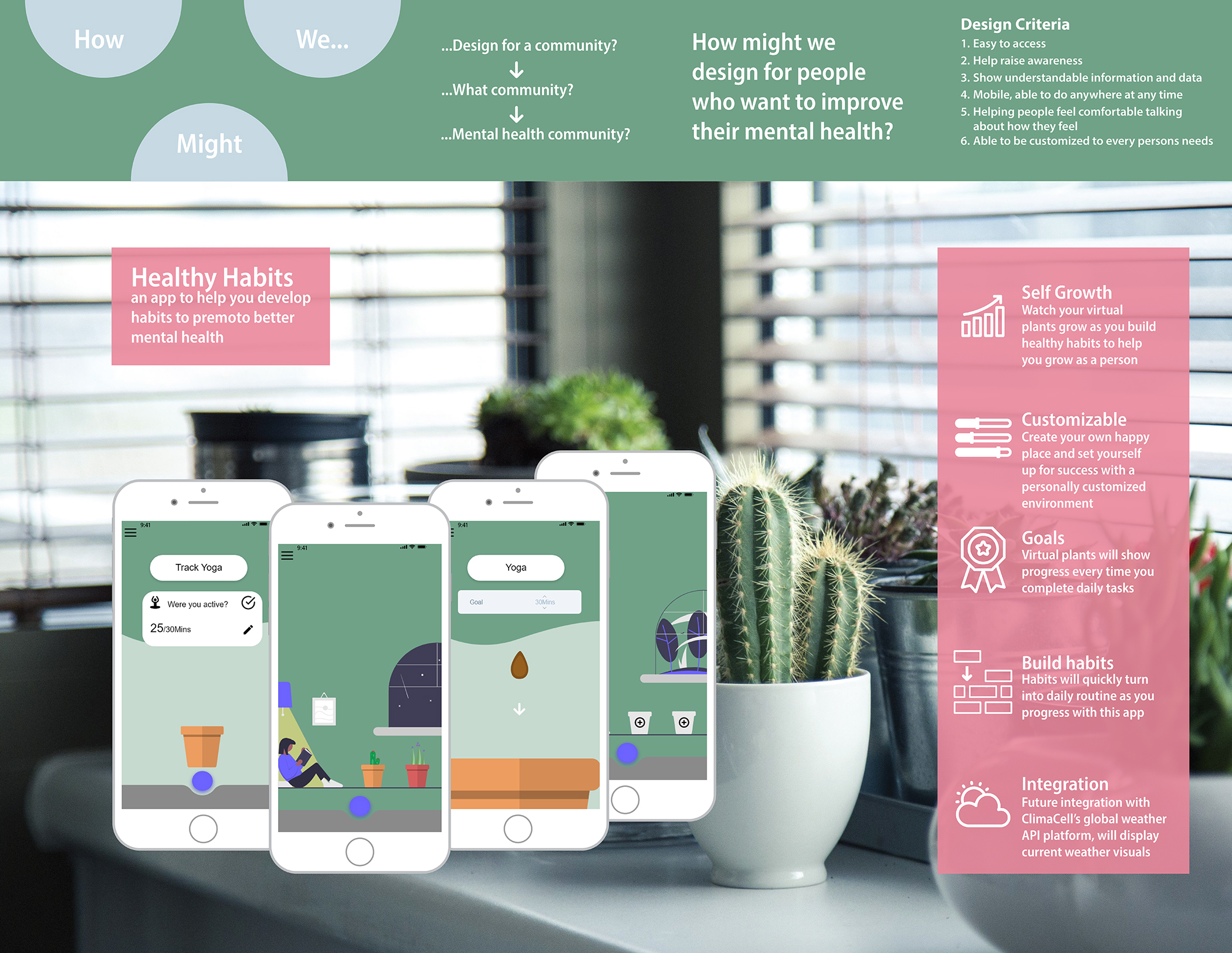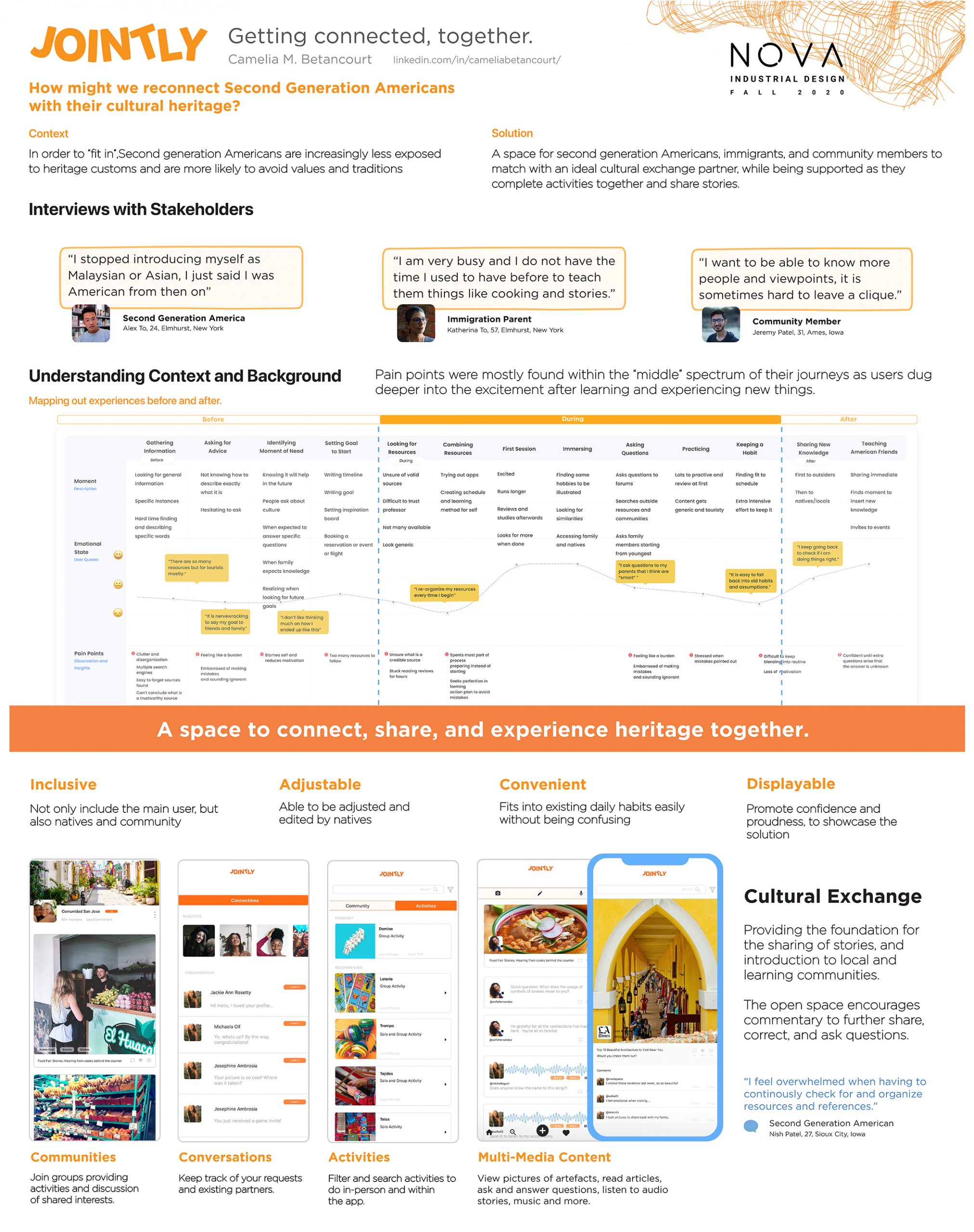ISU industrial design seniors build connections in capstone course
11/19/20
AMES, Iowa — Each year, Iowa State University industrial design students synthesize what they’ve learned throughout their studies with a final project in their capstone class. This fall, seniors in the course taught by assistant professor Verena Paepcke-Hjeltness brought a new perspective to challenges heightened by the COVID-19 pandemic, natural disasters and social and political unrest.
Students in the capstone studio are asked to identify a gap or weakness in some aspect of their life, and use design principles and processes to create a novel solution. After brainstorming ideas and outlining their objectives in a project brief, students research the problem, generate multiple possible directions to pursue, and often build and test models — both physical and digital — before developing the final project.
“The end goal is something tangible,” Paepcke-Hjeltness said. “This class is a ‘rehearsal’ for them to understand how to apply the design process and make meaningful and productive decisions. And they develop confidence in themselves to come away knowing they can be designers, learn from their failure and take safe risks.”
Past projects have included an inclusive playground for families with disabled children, an emergency alert system for seniors in care centers and space design for an acupuncture and massage business. This semester, students approached issues many of them, or their peers, have experienced directly this year.
Virtual studio environment
Michael Olk, from Dubuque, developed “indd. Center Space,” a virtual studio environment using the popular chat and gaming platform Discord.
With the shift from in-person to online and hybrid instruction during the ongoing pandemic, Olk noticed a significant impact on industrial design students and faculty, particularly in studio environments. In his assessment, Webex and Canvas — the primary communication platforms used by Iowa State — were not enough to keep students engaged over time, or to provide the sense of community and creative expression offered by the shared space in the Armory on campus.
Olk’s virtual studio “is different because of its online formatting and implementation for students and faculty to use,” he said. The Discord server is intended to “revitalize our creative collaboration, social connection and inspiration within the community in response to the limitations caused by the pandemic.”
Mental health support
The stress and strain students feel even under normal circumstances has been amplified by the pandemic, human rights issues, the divisive elections in the US and events like wildfires in the West and the Midwestern derecho. Seeing those around him struggle with anxiety and depression, Joseph Ambrose, from Brighton, Michigan, sought to help people by developing an accessible app for mental health.
The “Healthy Habits” app is aimed at promoting healthy habits and encouraging physical, emotional and cognitive steps to take control of one’s own well-being, Ambrose said.
Ambrose chose to use plants as a metaphor for personal growth. App users can visualize and track their progress from an empty pot (potential for growth) through planting seeds (taking steps toward better mental health) and nurturing the plant (taking control of their well-being), using the app’s tools to “blossom” in their life.
“One of my biggest challenges came during the research phase. Many people still feel they can’t talk about [mental health] and aren’t always self-aware, so it was difficult to get input from people,” he said.
“My conversations went better once my subjects became comfortable speaking with me about these concerns. With my app, I want to help promote a welcoming environment where people don’t feel judged and taking care of mental health is seen as normal.”
Cultural heritage connections
Conversations about the disconnect between some second-generation Americans and their cultural and ethnic heritage led Camelia Betancourt to explore an open-ended question about identity and cultural appreciation. Through research and interviews with second-gen students, Betancourt, from San Juan, Puerto Rico, created “Jointly,” a virtual space to help connect them with their families’ customs, values and traditions.
Through this new space, Betancourt hopes to bring together second-generation Americans, immigrants and other community members to share stories, articles, music, photos and videos; ask and answer questions; and join groups with activities and discussions on shared interests. There are opportunities for passive learning as well as direct interaction and support.
Like many students, Betancourt said it’s been difficult to stay motivated and find inspiration in the virtual environment.
“I am the only student in the class completely online and taking it in another time zone. I’m usually inspired by looking at the messy studio full of work and having conversations with professors and classmates about design,” she said.
“While I was not able to completely recreate this space virtually, I reached out to other students in my discipline to talk about our projects and extended my research of potential users through the industrial design network, allowing me to feel a closer connection as I gathered their insights and experiences,” Betancourt said.
Customizable campus tour
Jack Rometty, from Barrington, Illinois, wondered about campus tour changes and their impact on student recruitment during the pandemic. He interviewed Cyclone Aides (Iowa State student tour guides) and Chicago tour guides (who cater to tourists), who said the perfect tour is one custom-tailored for the consumer.
Even under normal circumstances, with traditional in-person tours, “campus tour guides have the impossible task of connecting stories with specific people,” Rometty said. The diversity and size of tour groups means some people inevitably miss seeing places or hearing information they’re interested in. The problem is simply compounded by COVID-19, he said.
He explored how an app could provide visitors with a personalized campus tour experience in the absence of or even in addition to a human guide. He created “Campus Safari,” which builds a custom GPS-guided walking tour with recorded facts and stories accessible through headphones.
“We could do a better job of giving touring families the stories and walking route they want” with relevant sites and details about specific majors, student organizations, Greek life and other points of interest, Rometty said.
Varied responses
Other projects by students in Paepcke-Hjeltness’ class include:
- Proper use and care of face coverings (Xiaotong Zhuo, Colorado Springs, Colorado)
- Inclusive music recording studio equipment (Benjamin Nordstrom, Eden Prairie, Minnesota)
- App to connect travelers to locals and their stories (Diego Gallardo, Marion)
- Education on proper use of skin care (Jenna Sun, Dubuque)
- Disaster relief cooler (Brian Holden, Ankeny)
- Luxury concrete furniture (Tyler Culjat, Council Bluffs, who will graduate in May)
Senior show
Twelve graduating seniors — nine of whom were in Paepcke-Hjeltness’ class — will share their work in “NOVA: Fall 2020 Industrial Design Senior Show,” a virtual review and showcase from 10 a.m.–noon and 4–5 p.m. Friday, Nov. 20, on Discord. A “senior send-off” will take place virtually Saturday, Nov. 21, on the same Discord platform.
Contacts
Verena Paepcke-Hjeltness, Industrial Design, verena@iastate.edu
Joseph Ambrose, Industrial Design graduating senior, ambrosej@iastate.edu
Camelia Betancourt, Industrial Design graduating senior, cameliab@iastate.edu
Michael Olk, Industrial Design graduating senior, mjolk@iastate.edu
Jack Rometty, Industrial Design graduating senior, jrometty@iastate.edu
Meg Grice, Design Communications, mgrice@iastate.edu
Heather Sauer, Design Communications, hsauer@iastate.edu
-30-
November 19, 2020 12:04 pm
Tags: Studio Project





